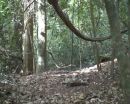(Press-News.org) Crocodiles which roamed the world's seas millions of years ago developed in similar ways to their modern-day relatives, a study has shown.
Fresh research into a group of prehistoric marine crocs known as Machimosaurus reveals key details of how and where they lived.
Each species adapted features that enabled them to live and hunt in a range of habitats, just like modern-day crocodiles. They varied in body length, body skeleton, skull and lower jaw shape, and in their teeth.
The ancient croc group included a nine-metre long saltwater species, which was adapted for living in open seas, and fed on marine turtles. Its closest relatives, by contrast, lived in coastal, choppy environments.
The prehistoric crocs' development mirrors those of today's crocodiles, whose saltwater varieties are far bigger and suited to larger territories compared with their smaller cousins that live closer to shore or in freshwater.
A team of researchers, led by the University of Edinburgh, examined fossil specimens from museums around Europe. From detailed analysis, they were able to determine key elements of the animals' anatomy and lifestyle, and concluded that not all were of the same species.
Until now, scientists were unsure whether more than one species of Machimosaurus existed. However, their findings show that there were at least three distinct species – one of which has been fully identified for the first time. The study is published in the journal Royal Society Open Science.
Dr Mark Young, of the University of Edinburgh's School of GeoSciences, who led the study, said: "Interesting parallels can be seen between groups of ancient crocodiles and those living today, with some able to swim out in the open sea, with others restricted to the coast. With more fossils being discovered, we look forward to learning more about this giant group of Jurassic predators."
INFORMATION:
University of Cincinnati geologists will be well represented among geoscientists from around the world at The Geological Society of America's Annual Meeting and Exposition. The meeting takes place Oct. 19-22, in Vancouver, Canada, and will feature geoscientists representing more than 40 different disciplines. The meeting will feature highlights of UC's geological research that is taking place globally, from Chile to Costa Rica, Belize, Bulgaria, Scotland, Trinidad and a new project under development in the Canary Islands.
UC faculty and graduate students are lead or ...
A University of Cincinnati research project is taking a groundbreaking approach to monitoring groundwater resources near fracking sites in Ohio. Claire Botner, a UC graduate student in geology, will outline the project at The Geological Society of America's Annual Meeting & Exposition. The meeting takes place Oct. 19-22, in Vancouver.
Botner's research is part of UC Groundwater Research of Ohio (GRO), a collaborative research project out of UC to examine the effects of fracking (hydraulic fracturing) on groundwater in the Utica Shale region of eastern Ohio. First launched ...
ANN ARBOR—Lake Erie has become increasingly susceptible to large blooms of toxin-producing cyanobacteria since 2002, potentially complicating efforts to rein in the problem in the wake of this year's Toledo drinking water crisis, according to a new study led by University of Michigan researchers.
Since the detection of the toxin microcystin left nearly half a million Ohio and Michigan residents without drinking water for several days in early August, discussions of ways to prevent a recurrence have largely focused on the need to reduce the amount of phosphorus fertilizer ...
As our ability to assess the pandemic risk from strains of influenza virus increases with the latest scientific developments, we must not allow ourselves to become complacent that the most substantial threats have been identified, argue an international consortium of scientists.
Influenza pandemics arise when a new virus strain – against which humans have yet to develop widespread immunity – spreads in the human population. There have been five such pandemics in the past 100 years, the worst of which – the 1918 Spanish Flu – cost 50 million lives ...
"Imagine a heavy ball rolling on an elastic net: what happens?" asks Daniele Fausti, researcher at Elettra Sincrotrone of Trieste and the University of Trieste. That's how Fausti explains the concept of "dressing" in physics: "the ball's movement is slowed down because each movement is accompanied by a deformation of the net: the sphere no longer behaves like a free sphere (i.e., that rolls on a rigid plane), but like a sphere that is 'dressed' by the net's deformation". Why is this "dressing" concept so important? "Because it's what physicists believe explains superconductivity ...
A UNIVERSITY of Huddersfield researcher has shown that tiny tweaks to the soundtrack can make TV adverts much more memorable, increasing their commercial impact.
The necessary adjustments are imperceptible to the ear and eye. But Andy Rogers – in the last stages of his PhD project at the University – has proved that there are considerable perceptual improvements if the synchronisation between the music and the visual content of the commercial is altered by just tenths of a second.
Joined by his PhD supervisor, Dr Ian Gibson, Andy has just presented his ...
VIDEO:
This video shows a chimpanzee who has constructed a tool with which to investigate a camera (Nimba mountains, Guinea).
Click here for more information.
West African chimpanzees will search far and wide to find Alchornea hirtella, a spindly shrub whose straight shoots provide the ideal tools to hunt aggressive army ants in an ingenious fashion, new research shows.
The plant provides the animals with two different types of tool, a thicker shoot for 'digging' and a more ...
COLUMBUS, Ohio—Our view of other solar systems just got a little more familiar, with the discovery of a planet 25,000 light-years away that resembles our own Uranus.
Astronomers have discovered hundreds of planets around the Milky Way, including rocky planets similar to Earth and gas planets similar to Jupiter. But there is a third type of planet in our solar system—part gas, part ice—and this is the first time anyone has spotted a twin for our so-called "ice giant" planets, Uranus and Neptune.
An international research team led by Radek Poleski, postdoctoral ...
This news release is available in German. Public spending appears to have contributed substantially to the fact that life expectancy in eastern Germany has not only increased, but is now almost equivalent to life expectancy in the west. While the possible connection of public spending and life expectancy has been a matter of debate, scientists at the Max Planck Institute for Demographic Research (MPIDR) have now for the first time quantified the effect. They found that for each additional euro the eastern Germans received in benefits from pensions and public health ...
VIDEO:
Fruit fly border cells form clusters of six to eight cells, which display directional migration during oogenesis. Migration of border cells in egg chambers can be examined in detail by...
Click here for more information.
Cell migration is important for development and physiology of multicellular organisms. During embryonic development individual cells and cell clusters can move over relatively long distances, and cell migration is also essential for wound healing and many ...





